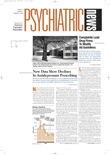APA's Office of Healthcare Systems and Financing (OHSF) has begun producing educational materials to prepare psychiatrists for continuing to provide appropriate care to their Medicare patients under Medicare's new Part D prescription drug benefit (see
page 2).
By January 1, 2006, when the new program goes into effect, the Centers for Medicare and Medicaid Services (CMS) expects that the majority of Medicare beneficiaries will have enrolled in the program. Many will have shifted from another drug plan or have drug coverage for the first time (see PP&MC, June 17).
“Part D has the potential for being an incredible burden on psychiatrists, who, starting on November 15, may well have to guide their patients through the process of selecting the most appropriate prescription drug plan [PDP] for their particular needs,” said Irvin“ Sam” Muszynski, J.D., director of OHSF.
“Patients will face very difficult medical decisions, depending on the availability of drugs through various plans. CMS is hoping everything will run smoothly and that beneficiaries will be thrilled with the new benefit, but the program's administrative design is so complex and there is so little time to implement it that patients are going to need a lot of help to ensure the program works to their advantage. With hundreds of PDPs vying to provide the benefit, each one with its own formulary and utilization management techniques, medical decision making will be very complicated.”
For dual-eligible beneficiaries—those who have Medicaid and Medicare benefits—the switch from their current Medicaid drug coverage to Part D is not voluntary. They will be enrolled automatically in a low-premium PDP that serves their region, and there will be no cost to them except minimal copays. These patients will have the option of switching to another plan at any time, but if they choose a PDP with a higher premium because it covers more of the medications they are currently taking, they will have to pay the extra cost.
Muszynski said that one action physicians can take now to prepare for the transition is to begin reviewing the charts of patients who are full dual eligibles and will be automatically enrolled in Part D.
Other Medicare beneficiaries must first decide whether to enroll in Part D; many will need to determine whether they are eligible for the low-income subsidy and, if so, apply for it. People who currently receive drug coverage through an employer-sponsored insurance plan that supplements their Medicare policy need to determine whether their current policy is at least as inclusive as or better than that offered by their regional plans under Part D. If it is, they may want to remain with their current policy, but if their situation changes and they decide Part D is preferable, they can switch at a later date without penalty. If their current policy is not as good, but they don't switch to Part D by May 15, 2006, they will have to pay a 1 percent penalty for every month they failed to have Part D after that date.
“Medigap” policies that currently provide a drug benefit along with other supplemental insurance may continue to provide that benefit, although CMS is recommending that beneficiaries switch from these policies to Part D.
OHSF will post regular updates on Part D on APA's Web site in Members Corner. The updates will contain links to APA documents to assist psychiatrists in lessening the burden that Part D may impose on them and links to sites of other organizations with valuable resources. OHSF will also sponsor a forum on Part D at the Institute on Psychiatric Services in San Diego on Thursday, October 6, at 10 a.m. Physicians with questions about Part D should contact the Managed Care Help Line at [email protected] or (800) 343-4671. ▪
